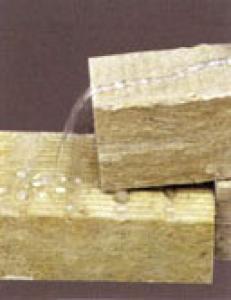Expanded Polystyrene (EPS) sandwich panels are a versatile and innovative building material that has gained popularity in recent years. These panels are composed of two outer layers of a material, typically metal or concrete, bonded to a lightweight core of EPS. The result is a strong, lightweight, and energy-efficient building solution that offers numerous benefits for various applications. In this article, we will explore the various EPS options available, their advantages, and potential applications.
What Makes EPS Sandwich Panels Unique?
EPS sandwich panels stand out due to their unique combination of properties. The lightweight nature of EPS makes these panels easy to handle and install, reducing labor costs and time. Moreover, the excellent insulation properties of EPS contribute to energy savings and a comfortable indoor environment. The panels also exhibit high strength-to-weight ratios, making them suitable for structural applications.
Types of EPS Sandwich Panels
There are several types of EPS sandwich panels, each with its own set of characteristics and ideal applications. Some of the common types include:
– Metal-Faced EPS Panels: These panels feature a metal skin, such as aluminum or steel, which provides additional strength and durability. They are ideal for use in commercial and industrial buildings where a robust and weather-resistant material is required.
– Concrete-Faced EPS Panels: With a concrete outer layer, these panels offer superior fire resistance and are suitable for high-rise buildings and other structures where fire safety is a priority.
– Composite EPS Panels: Combining different materials, these panels can be tailored to specific needs, such as increased thermal or acoustic insulation.
Advantages of Using EPS Sandwich Panels
The advantages of EPS sandwich panels are numerous and contribute to their growing popularity:
– Energy Efficiency: EPS provides excellent thermal insulation, reducing the need for artificial heating and cooling and lowering energy consumption.
– Acoustic Insulation: The panels can also act as sound barriers, creating a quieter environment in both residential and commercial spaces.
– Durability: EPS is resistant to moisture, corrosion, and pests, ensuring a long service life for the panels.
– Sustainability: Being lightweight, EPS reduces the carbon footprint associated with transportation and construction.
– Cost-Effectiveness: The ease of installation and low material costs make EPS sandwich panels an economically viable option.
Applications of EPS Sandwich Panels
EPS sandwich panels are not just limited to building construction. They have found their way into various other applications as well:
– Cold Storage Facilities: Due to their excellent insulation properties, EPS panels are ideal for cold storage and refrigeration units.
– Temporary Structures: Their lightweight and ease of installation make them perfect for temporary housing, disaster relief shelters, and event spaces.
– Agricultural Buildings: EPS panels can be used in agricultural settings for livestock housing and crop storage, providing insulation and protection from the elements.
– Modular Construction: The panels lend themselves well to modular designs, allowing for quick and efficient construction of various building types.
Design Considerations
When incorporating EPS sandwich panels into a project, several design considerations must be taken into account:
– Thermal Performance: The thickness and density of the EPS core can be adjusted to achieve the desired level of thermal insulation.
– Structural Integrity: The panel’s design must ensure it can withstand the loads and stresses it will be subjected to in its intended application.
– Aesthetics: While functionality is key, the panels can also be customized to meet specific aesthetic requirements, such as color, finish, or pattern.
– Regulatory Compliance: It’s essential to ensure that the panels meet all relevant building codes and regulations for the project’s location.
Case Studies
To better understand the practical applications and benefits of EPS sandwich panels, let’s look at a few case studies:
– A Commercial Building in Germany: A recent project in Germany utilized metal-faced EPS panels for the exterior walls, resulting in a 30% reduction in energy consumption compared to a traditional building.
– A Disaster Relief Shelter in Haiti: EPS panels were used to quickly construct temporary shelters after a natural disaster, providing much-needed housing within a short timeframe.
– A Greenhouse in the Netherlands: EPS panels were employed to create a well-insulated greenhouse, optimizing the growing conditions for crops year-round.
The Future of EPS Sandwich Panels
As the construction industry continues to evolve, the demand for sustainable and efficient building materials is on the rise. EPS sandwich panels are well-positioned to meet these needs, with ongoing research and development aimed at enhancing their performance and expanding their applications.
Conclusion
EPS sandwich panels offer a multitude of benefits, making them an attractive option for various construction projects. Their unique combination of strength, insulation, and sustainability sets them apart in the market. Whether you’re looking to build a new commercial space, create a temporary structure, or insulate an agricultural building, EPS sandwich panels are a solution worth considering. With ongoing advancements in technology and materials, the future looks bright for these innovative panels.

